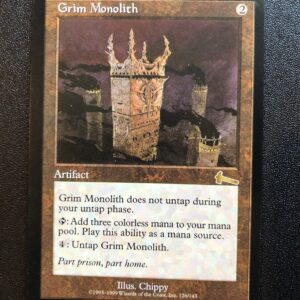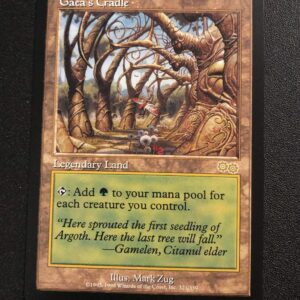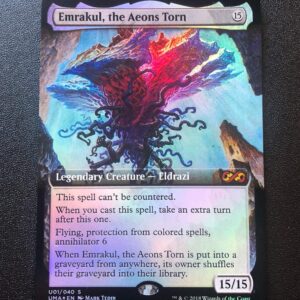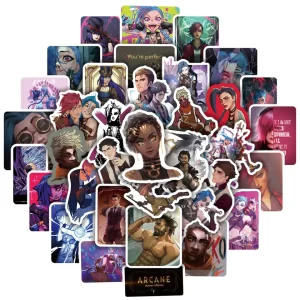Magic: The Gathering (MTG) has various formats that cater to different play styles and preferences. Among them, Modern stands out as a popular Constructed format that has been enjoyed since its inception.
In this guide, we’ll look at what Modern is, its appeal, how it compares to other formats, and why you should consider playing it.
What Is Modern?
Modern is a non-rotating Constructed format that allows players to build decks using cards printed from Mirrodin and Eighth Edition (2003) onward. The format was introduced in 2011 as a replacement for the Extended format, which had fallen out of favor due to its rotating nature. Modern’s non-rotating aspect means that once a card is legal in the format, it remains legal unless it is banned. This stability appeals to many players who want to invest in their decks without worrying about rotation.

In Modern, players use a minimum 60-card deck with up to 15 cards in their sideboard. The format includes many of Magic’s strongest creatures and planeswalkers, offering a wide variety of powerful and iconic cards from the game’s history.
Who Is Modern For?
Modern primarily appeals to competitive and veteran players, but it has something for everyone. If you’ve played Magic in the past and have favorite cards from older sets, Modern allows you to use them. The format’s extensive card pool enables players to build diverse and creative decks, making it a great choice for those who enjoy exploring different strategies.
For newer players or those returning to Magic, Modern offers the opportunity to play with a vast array of powerful cards and to upgrade their Standard decks with older, stronger cards. Whether you’re a casual player looking to have fun at your local Friday Night Magic (FNM) or a competitive player aiming to win tournaments, Modern has plenty to offer.
How Does Modern Compare to Other Formats?
Modern vs. Standard
Standard is a rotating format that only includes cards from the most recent sets, typically spanning the last two years. This rotation keeps the meta fresh but also means that decks and cards become obsolete over time. In contrast, Modern’s non-rotating nature allows for a more stable investment in decks. Standard decks often focus on creature-based strategies with higher mana costs, while Modern decks benefit from better mana fixing and a wider variety of strategies.
Modern vs. Pioneer
Pioneer is a newer non-rotating format introduced in 2019, covering sets from Return to Ravnica onward. The biggest difference between Pioneer and Modern is the absence of fetch lands in Pioneer, which affects mana fixing and deck construction. While Pioneer offers a smaller card pool and is less powerful than Modern, it provides a similar non-rotating experience with its own unique metagame.
Modern vs. Legacy
Legacy is an older non-rotating format that includes cards from all of Magic’s history, making it extremely powerful and fast-paced. Legacy features powerful noncreature cards like original dual lands and Brainstorm, which are not legal in Modern. While Modern has a strong focus on creature-based strategies, Legacy’s diverse card pool allows for a wide variety of deck types. Learn more.
Modern vs. Historic
Historic is a digital-only format available on MTG Arena that includes a curated selection of cards from across Magic’s history, along with digital-only cards. While Historic and Modern share some similarities, Historic’s unique card pool and digital-only mechanics set it apart. Modern remains a more powerful format with a broader range of strategies.
Modern-Legal Sets
Modern includes sets from Mirrodin and Eighth Edition (2003) onward, excluding supplemental sets like Commander precons. The following is a comprehensive list of Modern-legal sets:
- Mirrodin Block: Mirrodin, Darksteel, Fifth Dawn
- Kamigawa Block: Champions of Kamigawa, Betrayers of Kamigawa, Saviors of Kamigawa
- Ravnica Block: Ravnica: City of Guilds, Guildpact, Dissension
- Time Spiral Block: Time Spiral, Planar Chaos, Future Sight
- Lorwyn Block: Lorwyn, Morningtide
- Shadowmoor Block: Shadowmoor, Eventide
- Alara Block: Shards of Alara, Conflux, Alara Reborn
- Zendikar Block: Zendikar, Worldwake, Rise of the Eldrazi
- Scars of Mirrodin Block: Scars of Mirrodin, Mirrodin Besieged, New Phyrexia
- Innistrad Block: Innistrad, Dark Ascension, Avacyn Restored
- Return to Ravnica Block: Return to Ravnica, Gatecrash, Dragon’s Maze
- Theros Block: Theros, Born of the Gods, Journey into Nyx
- Khans of Tarkir Block: Khans of Tarkir, Fate Reforged, Dragons of Tarkir
- Battle for Zendikar Block: Battle for Zendikar, Oath of the Gatewatch
- Shadows Over Innistrad Block: Shadows Over Innistrad, Eldritch Moon
- Kaladesh Block: Kaladesh, Aether Revolt
- Amonkhet Block: Amonkhet, Hour of Devastation
- Ixalan Block: Ixalan, Rivals of Ixalan
- Standalone Sets: Dominaria, Guilds of Ravnica, Ravnica Allegiance, War of the Spark, Throne of Eldraine, Theros: Beyond Death, Ikoria: Lair of Behemoths, Zendikar Rising, Kaldheim, Strixhaven: School of Mages, Dungeons & Dragons: Adventures in the Forgotten Realms, Innistrad: Midnight Hunt, Innistrad: Crimson Vow, Kamigawa: Neon Dynasty, Streets of New Capenna, Dominaria United, The Brothers’ War, Phyrexia: All Will Be One, March of the Machine, March of the Machine: The Aftermath, The Lord of the Rings: Tales of Middle-earth, Wilds of Eldraine, The Lost Caverns of Ixalan, Murders at Karlov Manor, Outlaws of Thunder Junction
- Core Sets: Eighth Edition, Ninth Edition, Tenth Edition, Magic 2010 (M10), Magic 2011 (M11), Magic 2012 (M12), Magic 2013 (M13), Magic 2014 (M14), Magic 2015 (M15), Magic Origins, Welcome Deck 2016, Welcome Deck 2017, Core Set 2019, Core Set 2020, Core Set 2021
- Straight-to-Modern Sets: Modern Horizons, Modern Horizons 2, Modern Horizons 3
Modern Format Rules
The rules for Modern are similar to other Constructed formats:
- Deck Size: Minimum of 60 cards, with an optional sideboard of up to 15 cards.
- Card Limit: No more than four copies of any individual card (except for basic lands and specific exceptions like Relentless Rats).
- Match Structure: Best-of-three matches, with sideboarding allowed between games.
- Starting Life: Players start at 20 life.
- Win Conditions: Reduce your opponent’s life total to zero or have them draw from an empty library.
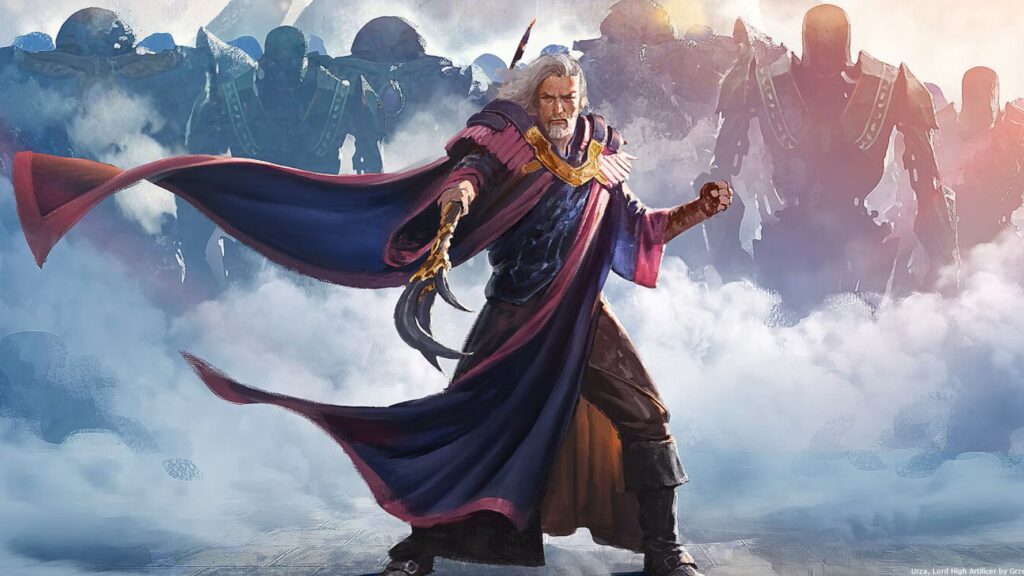
Modern Ban List
Modern has an extensive ban list to maintain balance and prevent certain cards from dominating the format. Some cards have been banned since the format’s inception, while others have been added over time as their impact became problematic. The ban list is regularly reviewed and updated to ensure a healthy metagame.
Where to Play Modern
Modern can be played in person (often referred to as “paper Magic”) or online via Magic Online (MTGO). Many local game stores (LGS) host Modern events, and MTGO offers regular competitive events with affordable card rental services. While Modern is not available on MTG Arena, Modern Horizons 3 can be drafted, providing some digital play opportunities.
Top Modern Decks
Modern’s metagame is diverse and shifts regularly, but here are some top-performing decks:
Rakdos Scam
A fast and powerful deck using cards like Dauthi Voidwalker and Grief to disrupt opponents and deal significant damage quickly.
Hammer Time
This deck utilizes Colossus Hammer combined with Sigarda’s Aid to equip creatures cheaply and swing for massive damage early in the game.
Grixis Shadow
A midrange deck centered around Death’s Shadow, featuring efficient threats, removal, and disruption to handle a variety of matchups.
Amulet Titan
A combo deck that generates large amounts of mana using Amulet of Vigor and bounce lands, aiming to cast Primeval Titan and search for lands to win the game.
Azorius Control
A classic control deck using powerful planeswalkers like Teferi, Hero of Dominaria, and efficient removal and counterspells to control the game.
Getting Started with Modern
Starting in Modern can be challenging, especially on a budget. If you have played other formats, consider starting with a deck that aligns with your preferred playstyle. Budget-friendly options are available, and rental services on MTGO can make getting into Modern more accessible.
Modern Products
While buying singles is generally more efficient for building Modern decks, opening boosters can still be fun. Key products for Modern include:
- Modern Horizons 3: Introduces powerful cards and mechanics to the format.
- Modern Horizons 2: Features staples like Ragavan, Nimble Pilferer, and Counterspell.
- The Lord of the Rings: Tales of Middle-earth: A thematic set with Modern-legal cards.
Modern Communities
Modern has a vibrant community with discussion groups on social media and platforms like Reddit. Popular streamers who play Modern include Piotr Glogowski (kanister_mtg), Reid Duke (reiderrabbit), Gabriel Nassif (yellowhat), and Guillaume Wafo-Tapa (WafoTapa). Dedicated content creators like aspiringspike also provide valuable insights and deck techs.
Classes on Modern
For those looking to improve their Modern gameplay, Spikes Academy offers courses taught by experienced players like Reid Duke. These courses provide in-depth lessons on deck building, strategy, and gameplay.
Wrap Up
Modern is a dynamic and exciting format that offers something for every Magic card player. Whether you’re a competitive veteran or a casual player returning to the game, Modern’s diverse card pool and stable non-rotating nature make it an appealing choice. Dive in, explore the format, and find the deck that suits you best.
What do you think of Modern? Are you a longtime player, or just considering getting into it? Let me know in the comments below or join the discussion on Twitter. For more content, check out our Limited set review for Modern Horizons 3. Until then, take care and happy gaming!

